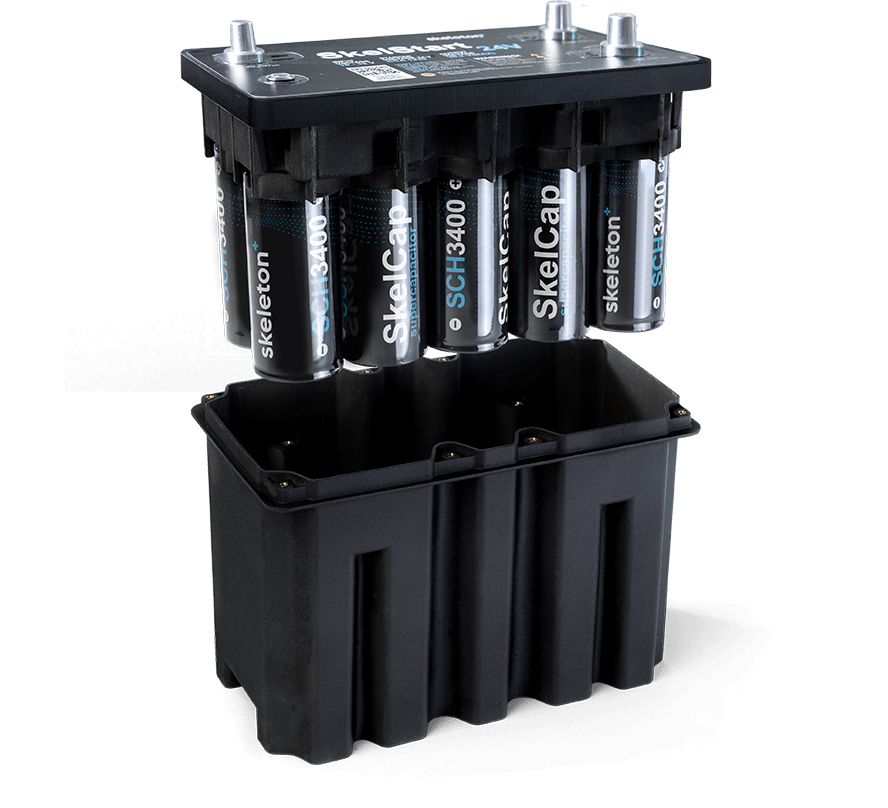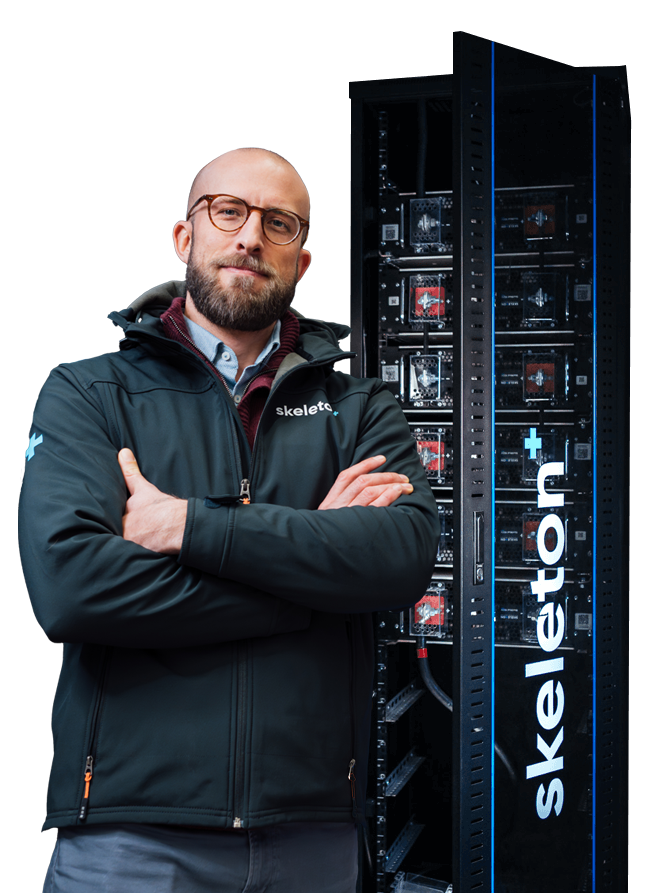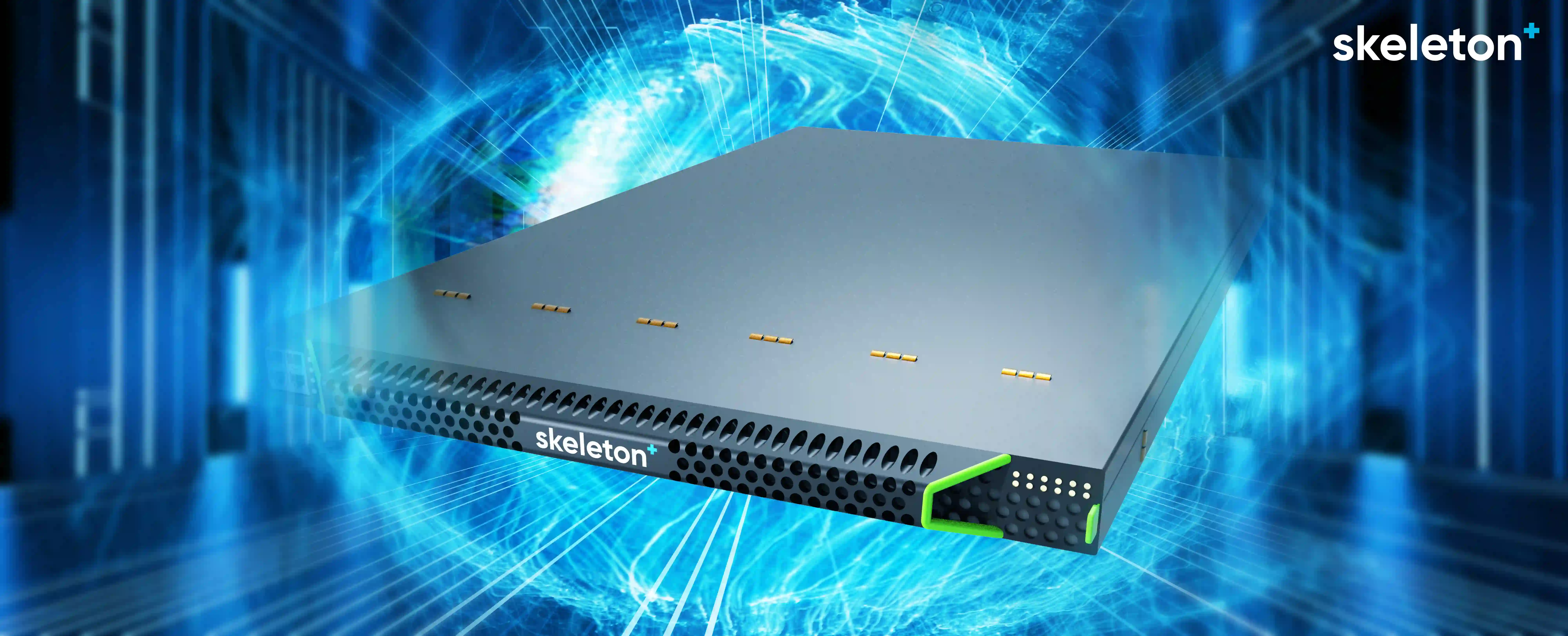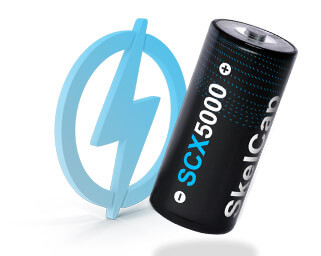
Engine Starting in Mining – breaking the myth of lead-acid batteries being cost-effective

What if implementing a greener and safer energy storage technology would also help significantly reduce operational costs? Skeleton’s Sales Manager Rait Randrüüt explains why replacing lead-acid batteries with supercapacitors to start mobile mining equipment makes financial sense.
For a long time, lead-acid batteries have been the go-to-solution for starting mobile mining equipment due to their low cost compared to other battery technologies on the market. The significant environmental and human health risks associated with lead-acid battery technology have been well-known for decades, but their affordability has kept them an attractive choice.
Yes, lead-acid batteries are well-established in the mining industry and operators have experience and expertise in handling and maintaining them. However, even when discarding the indirect costs of long-term environmental, sustainability and health issues, upcoming regulation, corporate social responsibility etc, lead-acid batteries offer no cheap energy storage in mining due to their short lifespan and high maintenance requirements.
.jpg?width=1920&height=1681&name=omid-roshan-lHI9NA4U7hg-unsplash%20(1).jpg)
Supercapacitor-technology-based SkelStart engine starting module presents a viable alternative to lead-acid batteries, boasting a longer lifespan and increased reliability, while simultaneously reducing the total cost of ownership. By eliminating battery-related downtime, mining operators can enjoy improved productivity and increased uptime, leading to a direct increase in revenue generation.
Rait, why is it crucial for mining equipment to operate continuously?
Mines are sources of raw materials that need to be transported for revenue generation, and this revenue is heavily dependent on the amount of ore extracted. Therefore, to maximize output, mining equipment needs to operate continuously, often running 24/7.Any unplanned downtime in mobile mining equipment can have a significant impact on both the mining process and cost. This is because all processes related to mobile equipment are interconnected, with each one dependent on the other. For instance, if the dump truck is unavailable, the bucket cannot work, and if the bucket is unavailable, the dump truck needs to wait.

How is downtime connected to energy storage?
When we examine the leading causes of unplanned downtime in mining operations, battery-related problems resulting in no-start situations are among the top five. It’s not surprising as the lifespan of lead-acid batteries in mobile mining equipment is known to be problematic due to the harsh environmental conditions and extreme temperature fluctuations.
For instance, mines located in the northern parts of Canada experience temperatures as low as -40°C, while African mines often face average temperatures exceeding 40°C. These extreme temperature conditions significantly affect the reliability of batteries used in mining equipment.
In addition, the round-the-clock usage causes significant wear and tear to the equipment. The negative impact of continuous usage shouldn’t be underestimated. It puts immense pressure on the machinery, contributing to a higher likelihood of downtime and potential breakdowns.
.jpg?width=1920&height=1280&name=dominik-vanyi-Mk2ls9UBO2E-unsplash%20(2).jpg)
How are mining operators currently dealing with the problem?
To avoid unplanned downtime, some companies resort to preventive maintenance tasks such as replacing batteries every 9-12 months or using designated jumpstart vehicles to support mobile mining equipment inside the mines. While these strategies may increase equipment availability, they come with high costs and cannot guarantee the elimination of downtime.
What benefits can mining operators expect from Skeleton’s SkelStart engine starting module?
SkelStart can effectively address the issues of downtime caused by battery and no-start situations, while also reducing maintenance costs and prolonging battery life. This product provides significant advantages to operators, particularly in mitigating one of the common problems faced by all mining companies. In addition, SkelStart's extended maintenance interval helps reduce the amount of time and resources spent on battery maintenance, leading to increased vehicle availability.
The supercapacitor-based engine starting module offers two significant advantages over the traditional lead-acid solution. Firstly, the module exhibits stable performance across a broad temperature range, with only a 5% performance difference between -40°C and 65°C. In contrast, the lifetime of lead-acid batteries reduces by half for every 10°C increase above 25°C. Secondly, the supercapacitor-based solution has a maintenance-free long lifetime, lasting up to 10 years for SkelStart, in contrast to the 9-12 month lifespan of lead-acid batteries.
SkelStart exhibits stable performance across a broad temperature range, with only a 5% performance difference between -40°C and 65°C. In contrast, the lifetime of lead-acid batteries reduces by half for every 10°C increase above 25°C.
Moreover, SkelStart offers additional safety benefits. Firstly, it is free of dangerous chemicals, eliminating any risk of acid leakage and making it safe for maintenance personnel to handle. Secondly, it is significantly lighter than lead-acid batteries, weighing only 8.5kg compared to 60kg for lead-acid batteries. These physical benefits not only enhance the safety of the product but also reduce the burden of handling and transportation.
SkelStart has garnered media attention mostly for on-road applications, but it has also been utilized in mining for some time now. Where is the engine start module already in use?
SkelStart is already being used at several mine sites throughout the Americas, particularly in Canada where extreme temperatures are prevalent. Currently, we are installing SkelStart at various locations in Australia and Africa.
SkelStart is already being used at several mine sites throughout the Americas, particularly in Canada where extreme temperatures are prevalent.
Most mobile equipment, such as excavators, wheel loaders, trucks, graders, and bulldozers, are also utilized in other industries, such as construction, demolition, and road building. SkelStart's versatile application makes it suitable for a wide range of uses. Ultimately, the decision to use the module comes down to the cost of downtime and its potential impact on business or project timelines.
What level of difficulty is involved in implementing SkelStart?
SkelStart is a simple plug-and-play solution that can be installed by reusing the existing battery enclosure. It is compatible with larger machinery, such as 100+ tonne mining dump trucks that typically use a battery setup of 4 x 8D Lead Acid Batteries. In these cases, SkelStart module can be simply installed in the same battery compartment by replacing two 8D batteries with four SkelStarts. Only modified wiring for the starter electrical connection is required.
For other types of machinery, it may be necessary to find a suitable location to install SkelStart. However, the module can be installed horizontally or vertically, making it easy to fit into most equipment.
Nevertheless, even a first-time installer can easily install the product within a few hours. You can see a sample installation on trucks on YouTube: SkelStart installation for trucks.
While we have highlighted the financial advantages of incorporating supercapacitors for engine starting, it is only a portion of the rationale for decreasing the reliance on lead-acid batteries in mining. What are the safety risks of continuing to use lead-acid batteries in significant quantities with a limited lifespan?
Lead-acid batteries can pose potential hazards to both human health and the environment due to the chemicals they contain. The batteries are made up of lead, a highly toxic metal, and sulfuric acid, a corrosive electrolyte solution. As both of these materials are classified as hazardous, it is crucial to handle the batteries properly.
Lead-acid batteries emit harmful and potentially explosive fumes, including hydrogen sulfide gas, while charging. This gas is colourless, flammable and poisonous. It can accumulate at the bottom of poorly ventilated spaces since it is heavier than air. While battery acid itself is not flammable, the hydrogen gases emitted during charging are flammable and highly explosive at high concentrations.





